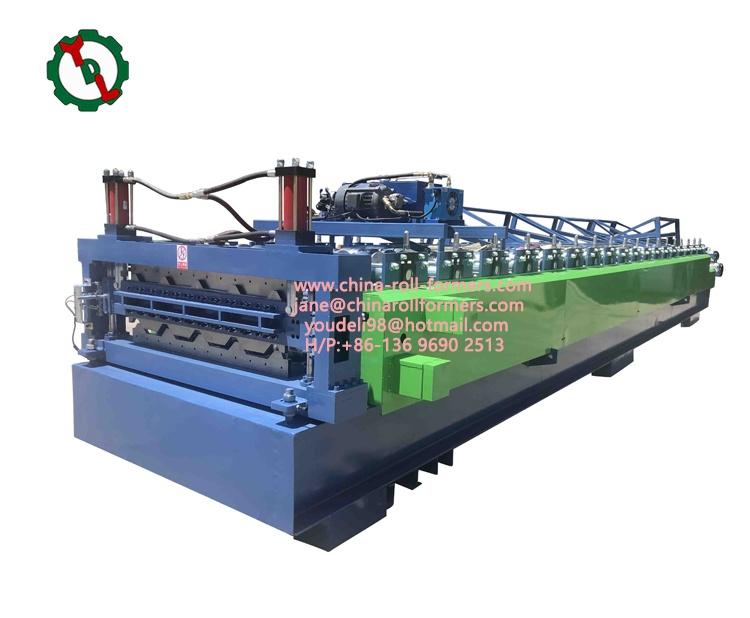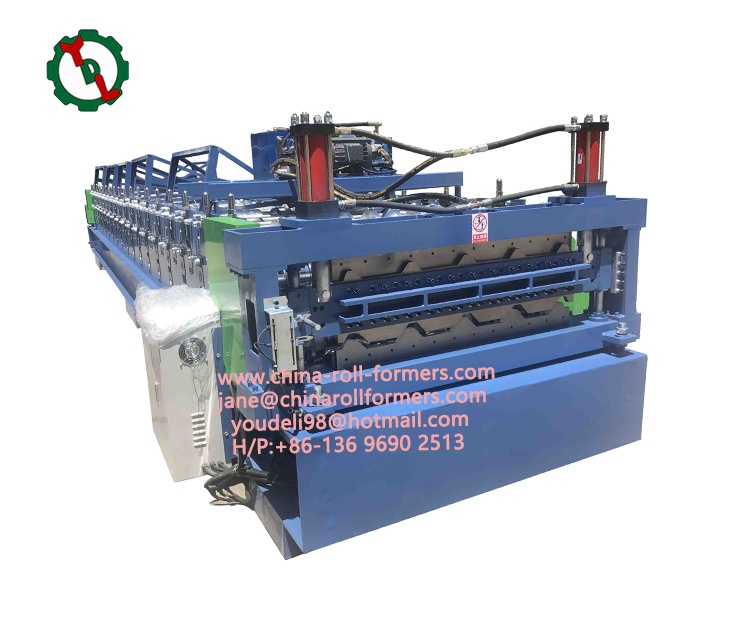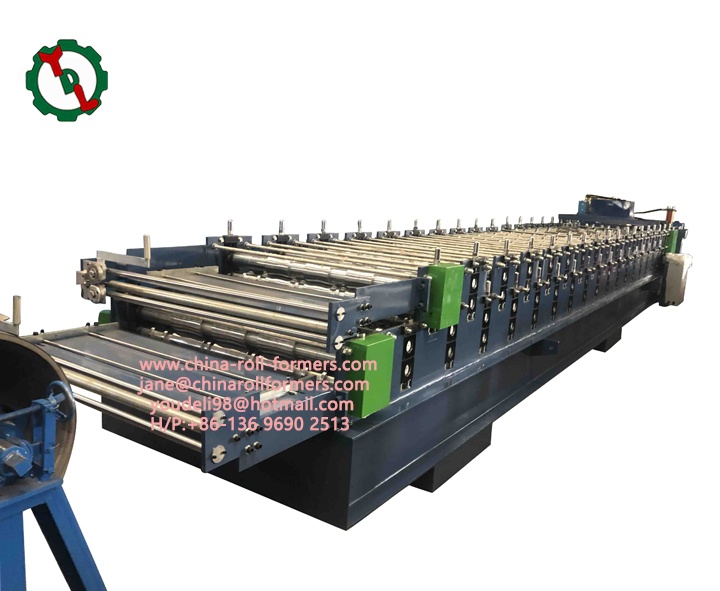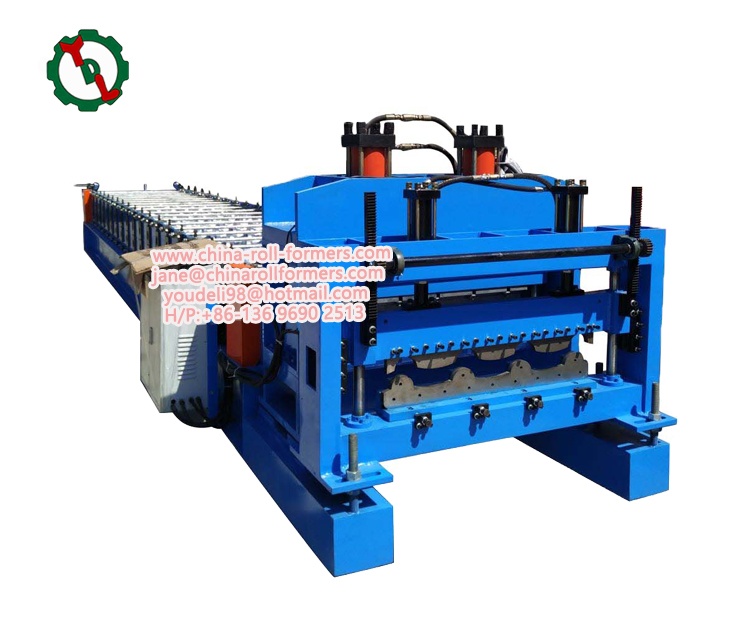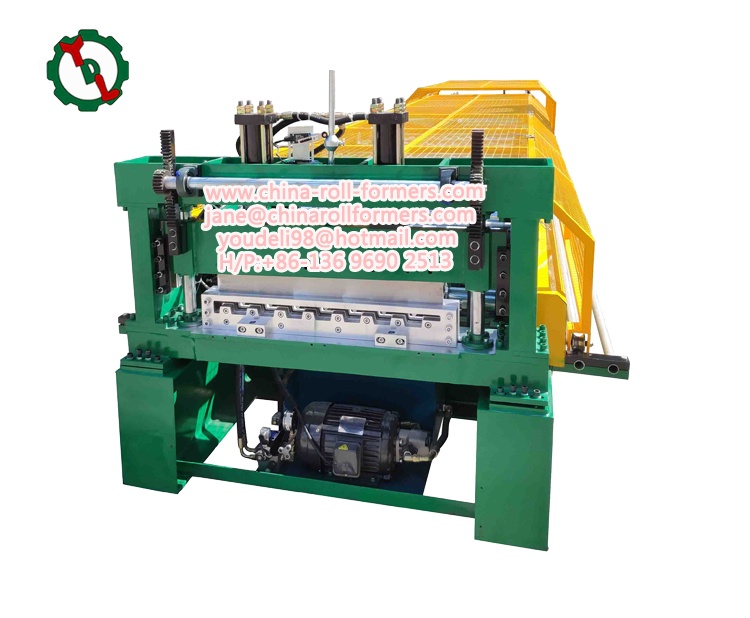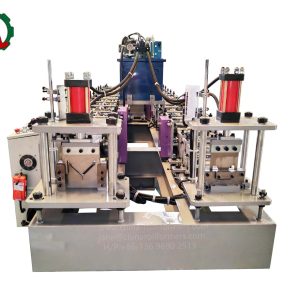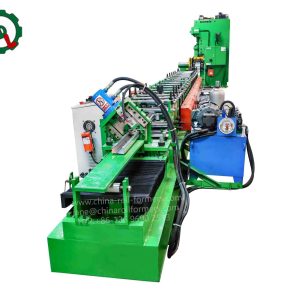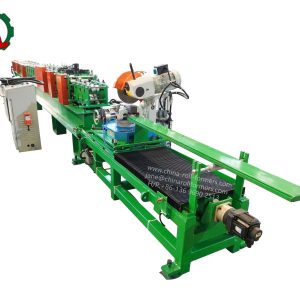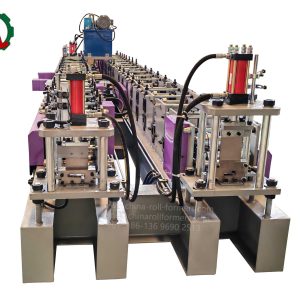What is a Double Layer Roll Forming Machine?
A Double Layer Roll Forming Machine is an advanced metal sheet forming equipment designed to produce two different roofing or wall panel profiles within a single machine. This innovative system allows manufacturers to save space, reduce costs, and enhance production efficiency by integrating two roll forming lines into one compact structure.
Unlike traditional roll forming machines that can only produce one type of sheet at a time, the double layer roll forming machine is equipped with dual-forming stations, enabling the production of two different sheet profiles by simply switching between the upper and lower rollers. This makes it an ideal solution for industries requiring versatile, high-precision, and cost-effective sheet metal production.
A double roof machine is a modern piece of equipment used to increase efficiency and productivity. These machines are built with strong and high quality materials for durability and low maintenance. These features help reduce manufacturing costs and extend the life of the equipment.
The Double Layer Roll Forming Machine operates through a continuous process where metal coils are fed into the system, passed through forming rollers, and shaped into the desired profile. The operator can switch between the two forming layers by selecting the preferred profile from the PLC control panel, allowing seamless production of different sheet designs without manual reconfiguration.
Key benefits and features:
- High-quality roof slab manufacturing: Roof slabs produced using conventional machinery often suffer from inconsistent quality. With its advanced manufacturing technology, Double Roof Machine can ensure the high quality of roof panels and reduce problems such as dents and scratches.
- Durability and Low Maintenance: These machines are constructed of durable and high-quality materials to reduce not only routine maintenance but also maintenance costs. This helps reduce production costs and prolongs the life of the equipment.
- User-friendliness: The double-roof machine is designed to be user-friendly, and can be easily operated even by people without special technical knowledge. This allows the machine to be operated by a small team, reducing labor costs.
- Multiple Alternatives: These machines offer a wide range of alternatives to various materials and shingle profiles, changing the way traditional shingles are manufactured. Customers can choose different materials according to their needs and preferences to meet the requirements of different projects.
Double roofing machines represent an important innovation in the roofing industry, designed to increase productivity and profitability. Not only do they provide high-quality roof panels, they also reduce production costs and make roof manufacturing more sustainable and efficient. This innovation takes roof manufacturing to a new level, offering more options and possibilities to the construction industry.
Applications of Double Layer Roll Forming Machine
The Double Layer Roll Forming Machine is widely used in various industries due to its ability to produce two different metal sheet profiles within a single system. Its high efficiency, precision, and flexibility make it an essential machine in roofing, construction, and manufacturing sectors. Below are the key applications:
1. Roofing and Wall Panel Production
- Used for manufacturing metal roofing sheets, wall cladding, and ceiling panels.
- Produces different profiles such as corrugated sheets and trapezoidal panels for residential, commercial, and industrial buildings.
- Ensures durability and weather resistance, making it ideal for extreme climate conditions.
2. Steel Structure and Prefabricated Buildings
- Applied in prefabricated homes, warehouses, and steel structure buildings.
- Provides high-strength metal panels that enhance structural integrity and energy efficiency.
3. Transportation and Automotive Industry
- Used to form metal panels for vehicle bodies, trailers, and container manufacturing.
- Ensures lightweight, corrosion-resistant, and durable components for transportation infrastructure.
4. Agriculture and Farm Buildings
- Helps produce metal sheets for barns, greenhouses, and livestock shelters.
- Provides a cost-effective and long-lasting solution for farm structures.
5. Industrial Manufacturing
- Used in manufacturing plants for producing protective coverings, partitions, and enclosures.
- Supports the production of ventilation ducts, storage units, and industrial workspaces.
6. Energy and Power Plants
- Produces metal sheets used in solar panel mounting structures and wind turbine components.
- Ensures stability and protection for energy-related infrastructure.
The Double Layer Roll Forming Machine is an indispensable asset for industries requiring high-quality, versatile, and efficient metal sheet production, offering cost savings, automation, and design flexibility for a wide range of applications.

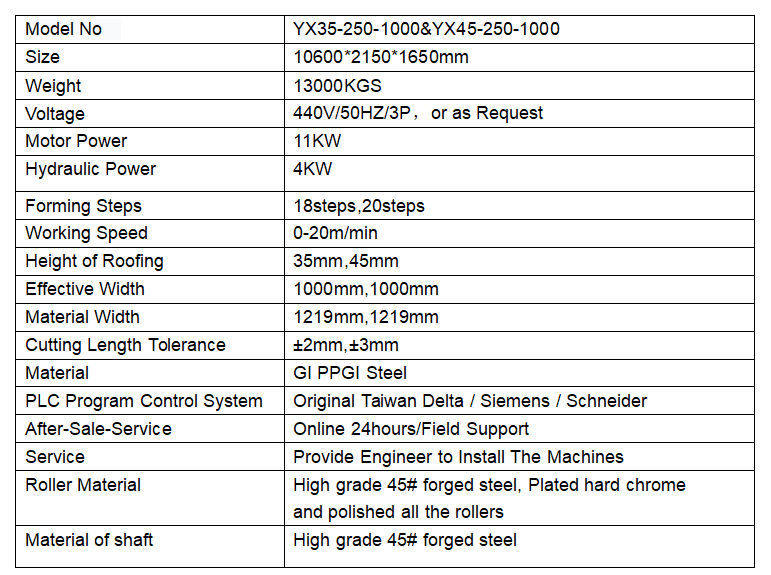

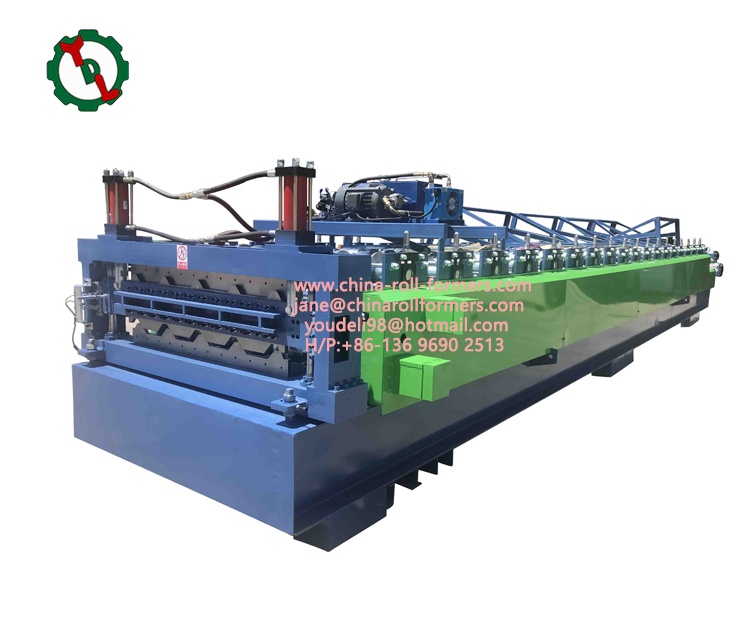
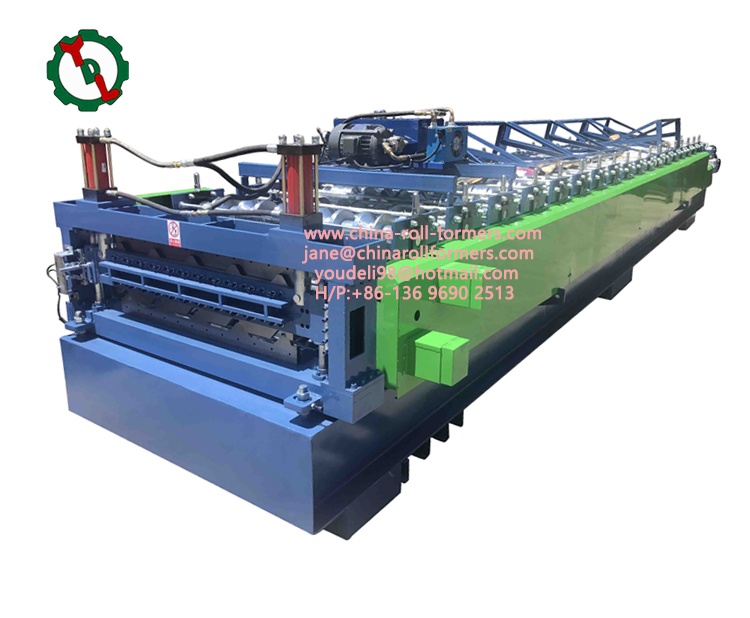
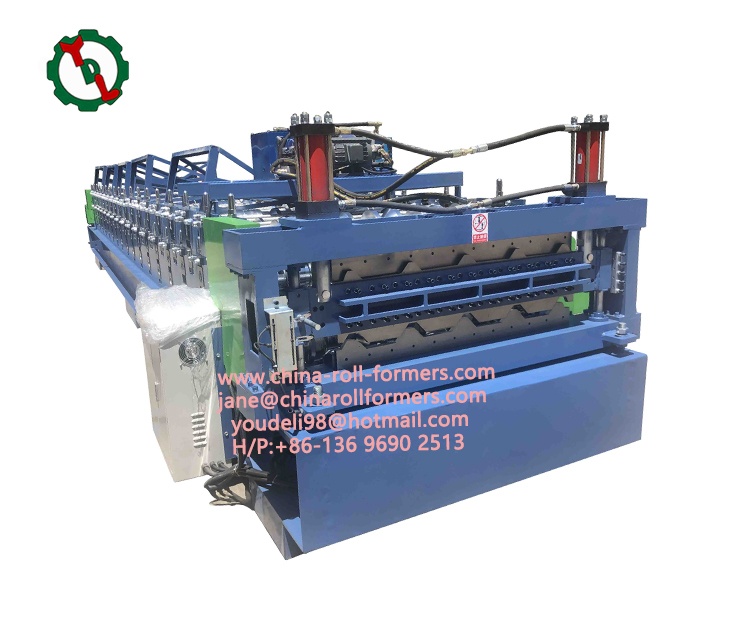
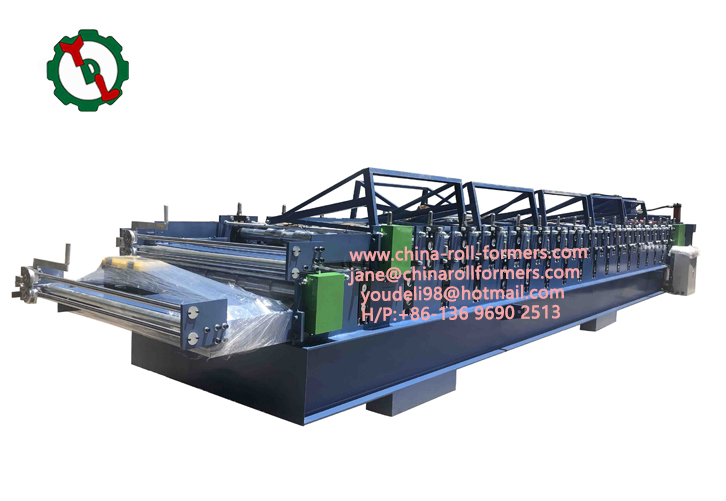
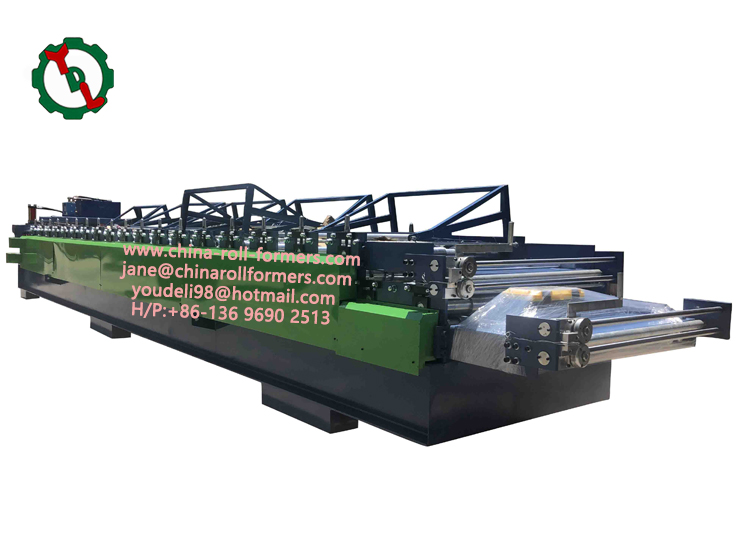
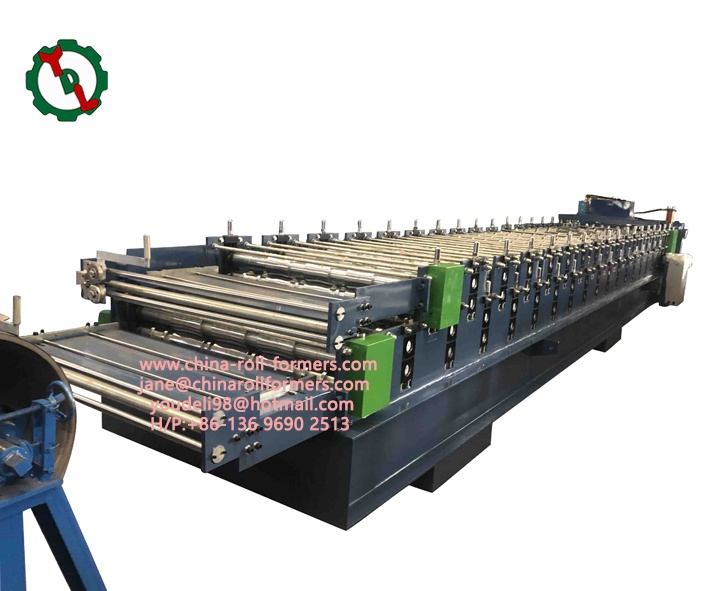
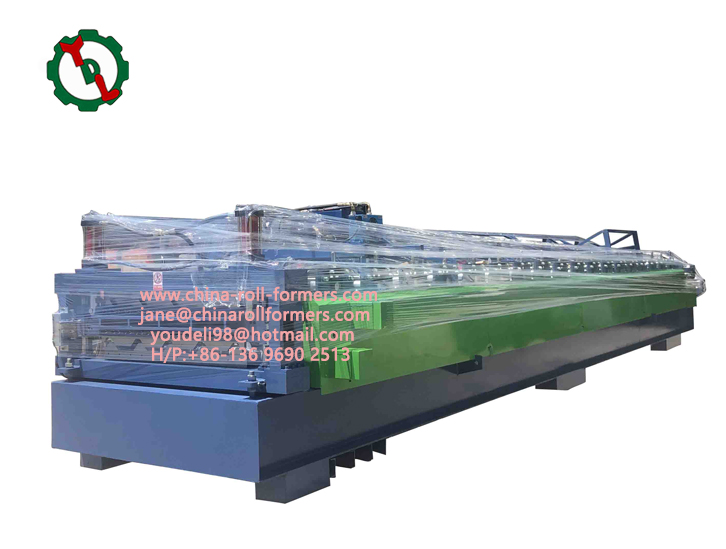
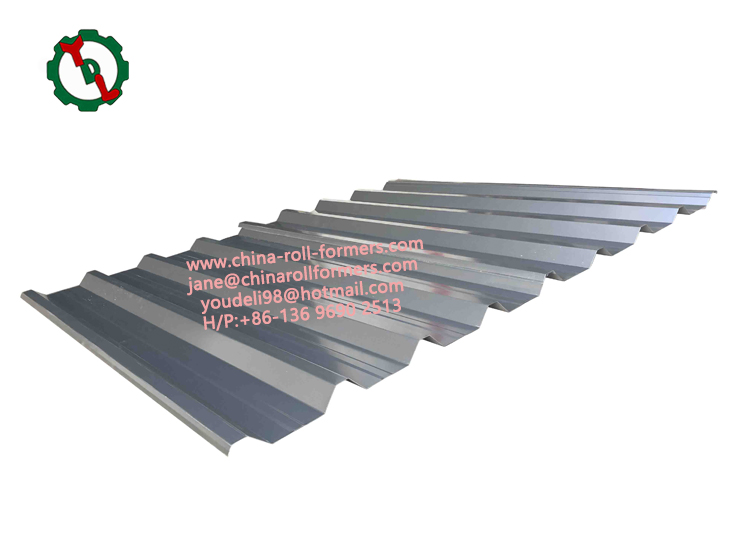
Double Layer Roll Forming Machine process flow
The core of the metal forming industry is double layer roll forming machinery. Panels, trim, and roofing sheets are just a few of the metal shapes that can be made with them. Two forming stations on the machines enable the simultaneous formation of two distinct profiles. A two layer roll forming machine’s workflow looks like this:
Step 1: Material preparation
The roll forming machine typically receives a coil of steel or aluminum sheet as the raw material. Following a quality check, the material is put into the decoiler.
Step 2: Decoiling
The sheet is fed into the first forming station by the decoiler after the coil has been unwound. To achieve a smooth and continuous process, the roll forming machine’s speed and the decoiler’s speed are synchronized.
Step 3: Forming
The material is formed into the first profile at the first forming station, and the second profile at the second forming station. A sequence of forming rolls are used to gradually bend and mold the material into the necessary shapes, resulting in the profiles.
Step 4: Cutting
A high-speed flying saw or rotary shear is used to trim the material to the required length after it has been shaped into the proper profiles. A hydraulic cutting system that can make cuts at predetermined intervals is another feature of some machines.
Step 5: Stacking and packaging
The completed goods are stacked and packaged and prepared for delivery. Many roll forming machines come equipped with an automatic stacking system that gathers and stacks the final goods, making packing and shipping the goods simpler.
Step 6: Maintenance
To keep the roll forming machine performing at its best, routine maintenance is necessary. This include verifying the alignment of the forming stations, lubricating the rollers, and repairing any worn-out or broken components.
The preparation of the material, decoiling, forming, cutting, stacking and packaging, and maintenance are all included in the process flow of a double layer roll forming machine. High-quality metal products can be produced using this method and used in a number of different sectors. Roll forming machines can produce dependable outcomes for many years by adhering to the right process flow and performing routine maintenance.


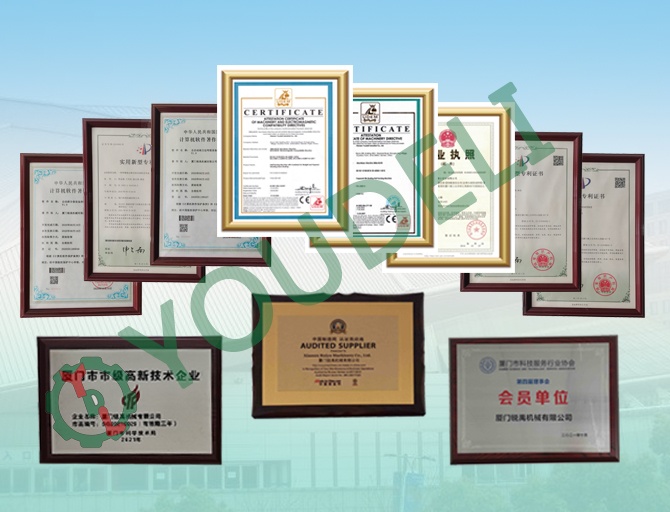

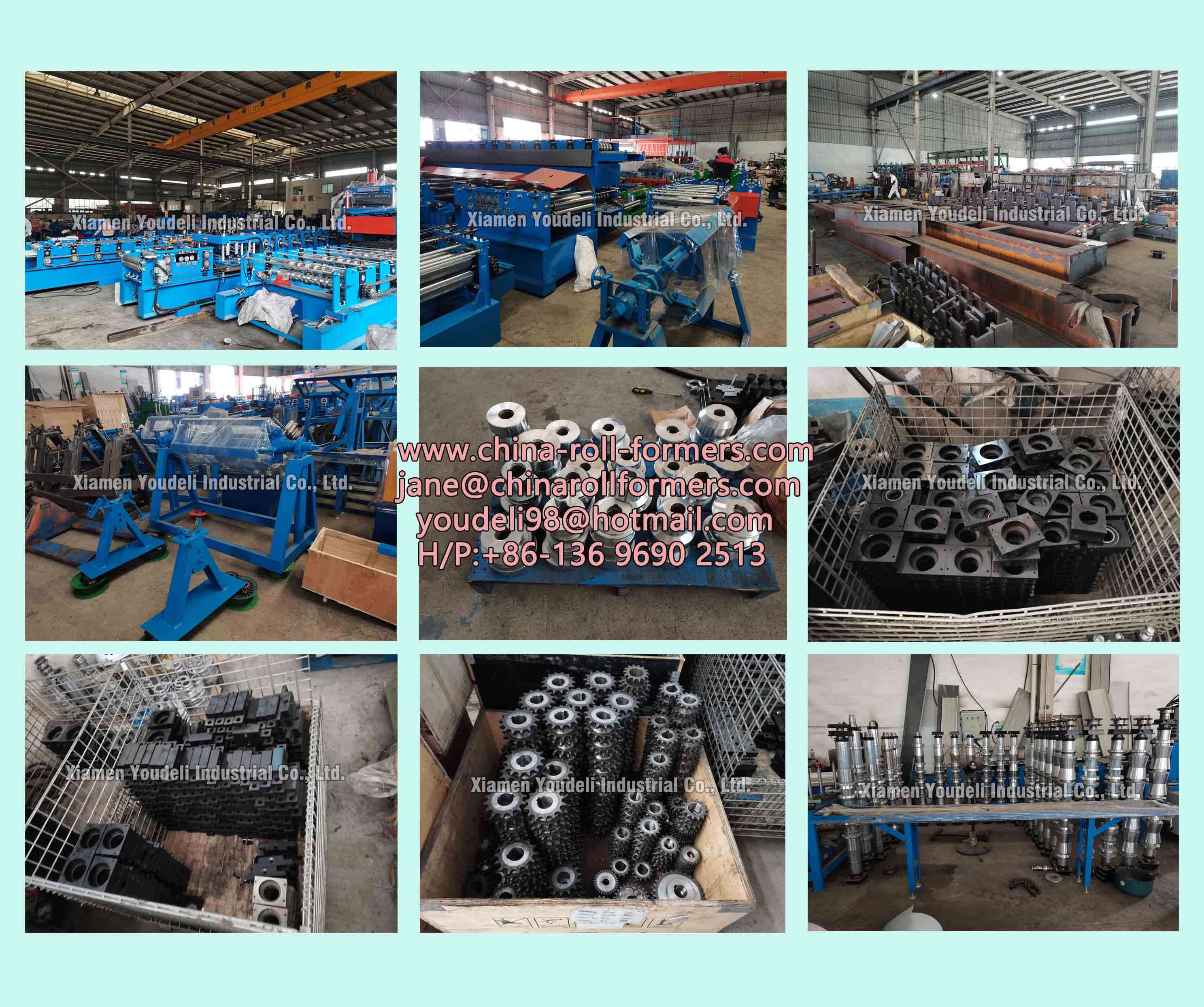

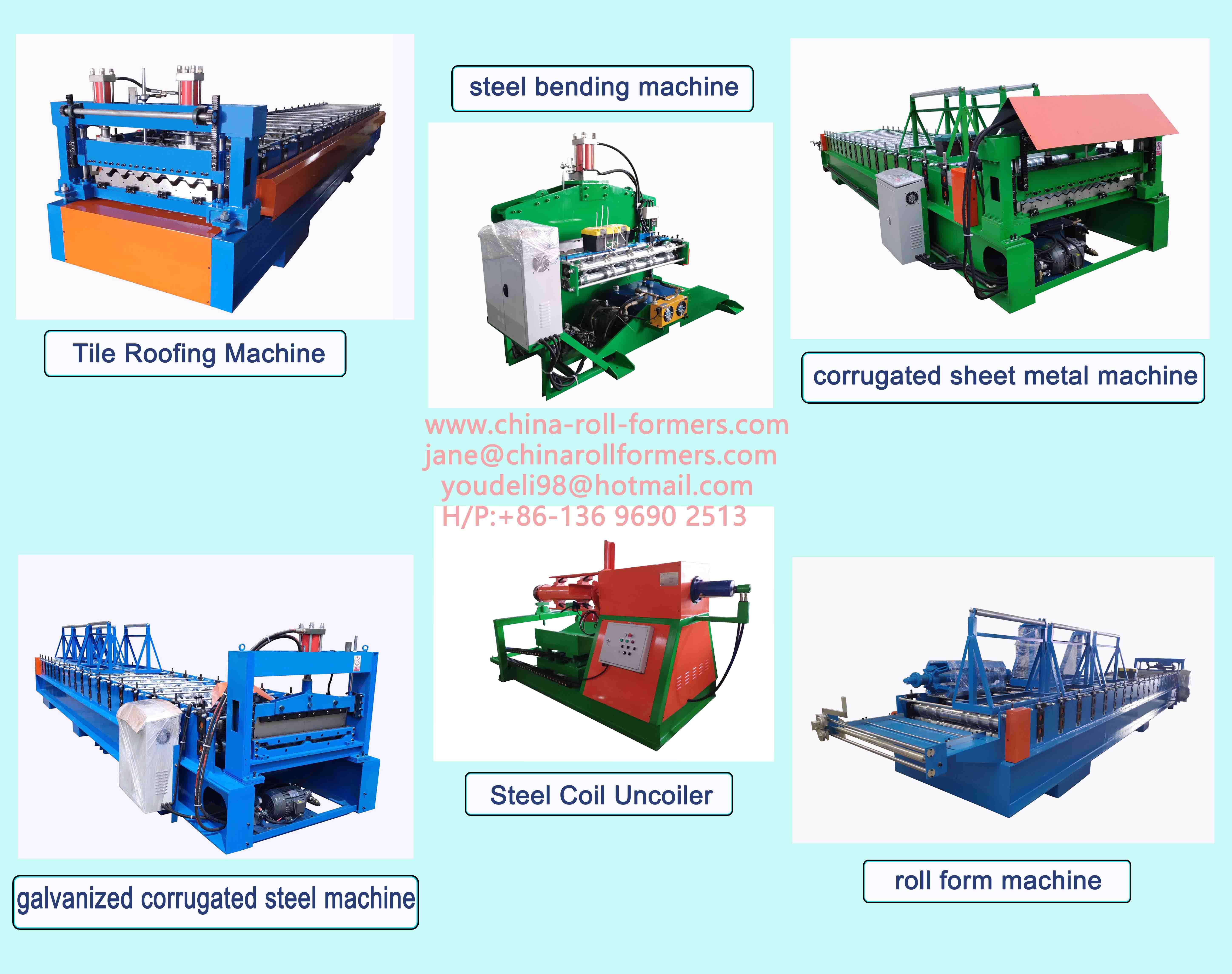
OUR CUSTOMERS EXHIBITION
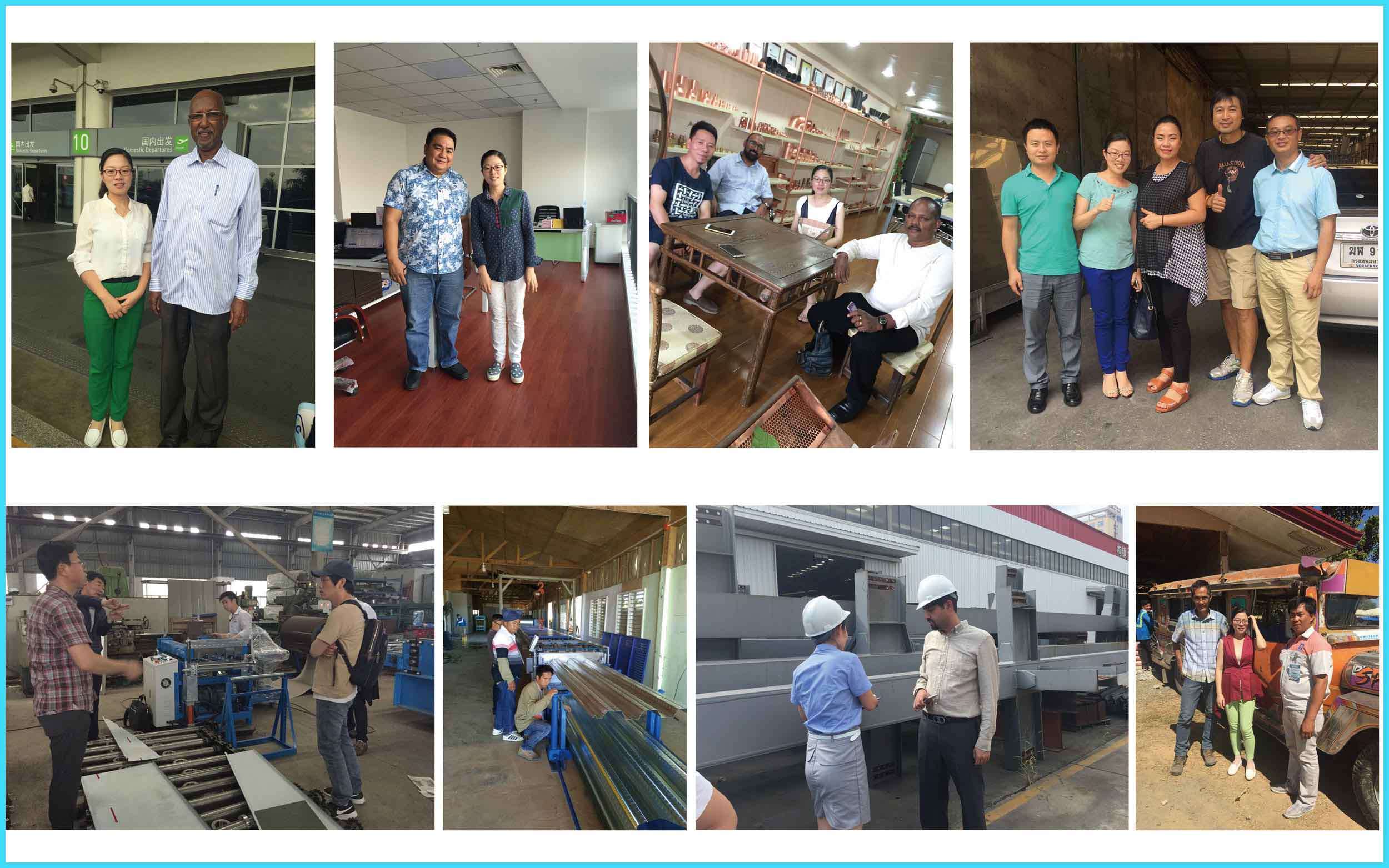
SHIP EQUIPMENT
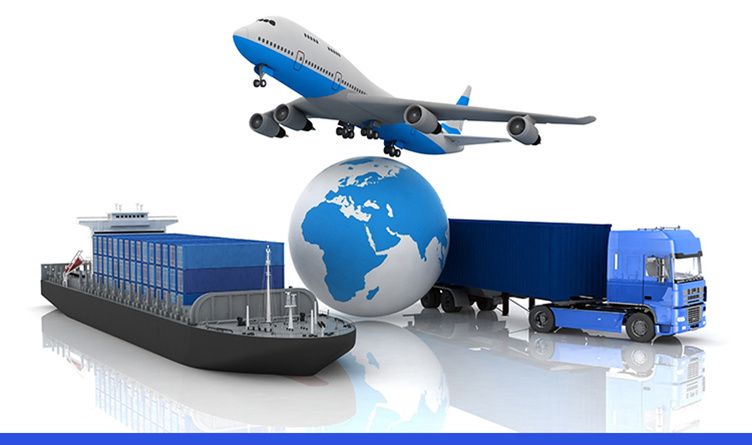
CARGO LOADING
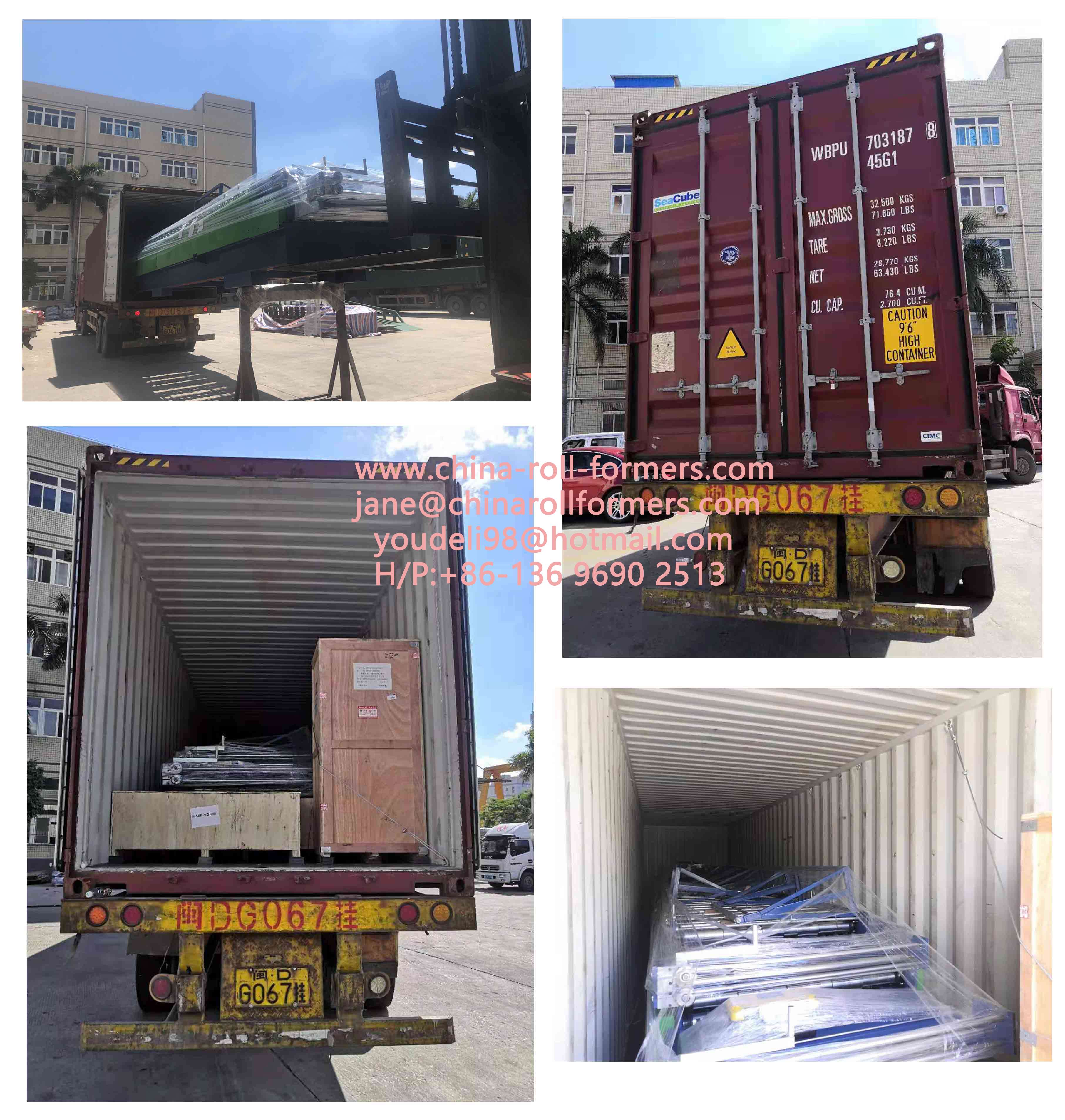
What is double roof roll forming machine?
Double-layer roof roll forming machines are specialized equipment for the manufacture of double-layer roof panels combining the advantages of peeling and layering. Durable and efficient, these machines can provide significant savings in manufacturing time and cost.
Features of double-layer roof panels:
Thermal insulation properties: The two-layer roof panels manufactured by double-layer roof roll forming machines have excellent thermal insulation properties and are ideal for warehouses, residential structures and energy-efficient buildings. This helps to improve the energy efficiency and comfort of the building.
Customization: These panels can be adapted to different design profiles and sizes according to the needs of the customers. This customizability makes double-layer roof panels ideal for a variety of construction projects.
Manufacturing process:
Uncoiling and Leveling: The initial stages of the manufacturing process involve uncoiling, leveling, feeding and punching of the parent material coil. In order to ensure that the coil can pass through the roll forming machine, the equipment adopts a pinch roll drive mechanism.
Roll Forming: In the roll forming process, the parent metal sheet passes through several stations, starting with a first rolling draft. The number of stations in the machine and the design of the dies determine the number of rolls required for the desired roof slab profile.
Cutting and stacking: After the first ply is made, the machine cuts the sheets to product specifications and stacks them together. A second dose of base metal sheet material is then loaded into the roll-former and formed in the same manner as the first layer.
Bonding: To join two shingles to form a continuous roof unit, adhesive is applied to the upper layer of the finished shingles.
Bundling and Delivery: Finally, the shingles are bundled and supplied to the customer.
Double roof roll forming machines are versatile and can manufacture different types of roof panels such as corrugated panels, tiles and stepped tile profiles. They work in an efficient manner, enabling producers to quickly produce large quantities of roofing panels to meet market demand. These machines are also equipped with effective control systems which increase productivity and safety.
In conclusion, double roof roll forming equipment is of vital importance to the construction industry. Not only do they ensure the quality and reliability of roofing materials, they also increase the energy efficiency of buildings, providing key support for sustainability and efficiency in the construction industry.

